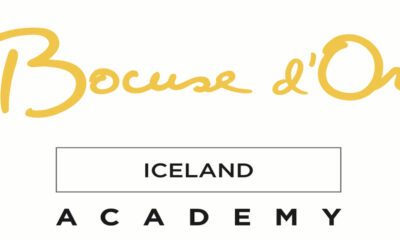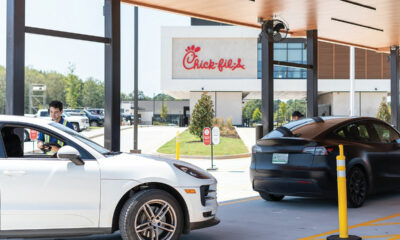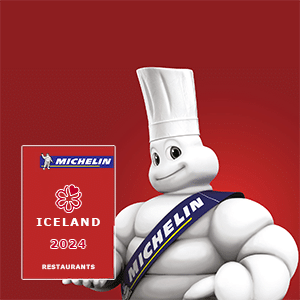Lifid
In the Language of Gastronomy, Those Michelin Stars Translate as Dollar Signs
PERHAPS the French complain about McDonalds because they find it so hard to buy their best food at affordable prices. A meal in a Michelin three-star restaurant in Paris can cost $300 or $400 a person, not including wine.
How could food become so expensive? To answer this and other questions, the inaugural meeting of the Society for Quantitative Gastronomy was held in May in Bordeaux, France. The society, founded by a group of young French economists, is bringing scientific measurement to bear on food markets. Their message is that status and image not just food play an increasing role in high restaurant prices.
(A disclosure: I am a longtime advocate of ethnic dining see my discussion at www.tylercowensethnicdiningguide.com and spoke at the societys conference in May on How Did American Food Get So Bad? So the results presented at the meeting confirmed my belief that many of the tastiest meals are entirely affordable, at least if we know where to look.)
The expense of fine dining has been rising for decades. From 1950 to 2005, the prices of the highest-quality Parisian meals defined by the Michelin dining guide categories very comfortable to luxury rose a startling 216.8 percent in real terms, adjusting for inflation. By contrast, adjusted for inflation, regular nonluxury food became cheaper in that period. Thats why we can afford to eat so much.
The evidence is from A Paradigm Change in Taste Industries, ( www.fokus.or.at/html_acei/files/papers/Barrere,%20Chossat%20%26%20Livat.pdf ) written by the French economists Christian Barrère, Véronique Chossat and Florine Livat.
In addition, the price gap between the most highly rated Parisian restaurants and the average Parisian restaurant has increased steadily. The most highly regarded restaurants have continued to improve their design, décor and level of comfort, again as measured by the Michelin dining guides. In the first half of the 20th century, it was not hard to get highly regarded Parisian food without also paying for the accompanying fineries and status. But that is no longer the case.
In a paper called Stardust Over Paris, two economists, Olivier Gergaud from the University of Reims and Vincenzo Verardi at the Free University of Brussels, and a mathematician, Linett Montaño Guzmán, looked at how much a Michelin star a special designation of dining quality is worth.
Receiving a Michelin star increases prices in a Parisian restaurant by 20 percent, controlling for measures of quality, décor and location. Michelin-starred restaurants in fancy hotels, or in areas with other Michelin-starred restaurants, also have higher prices, again adjusting for quality. Diners are paying more to eat in fine or prestigious surroundings, whether or not the food is better. One gastronomy expert, speaking in Le Nouvel Observateur, noted, Gaining a Michelin star ensures that your banker will be kind to you.
For those who hold the food as their main concern, the researchers offer a way forward. Dr. Verardi and Dr. Gergaud have built an index for overpriced and underpriced restaurants, relative to their food. They use the Zagat Survey to Parisian restaurants whose popularity rankings are generated by diners reports, not critics to provide an independent measure of customer satisfaction, which is then compared with price.
In their sample, Bistro dAlbert is the most underrated restaurant; it produces a level of customer satisfaction that is undervalued by 55 percent relative to its price, according to their calculations. The well-known Maxims appears on the overpriced side of the ledger.
Wine markets exhibit analogous disparities between price and pleasure. Prices follow published rankings and label information more than the results of subjective taste tests. That was the finding in a recent study (What Determines Wine Prices?) of Bordeaux and Burgundy vintages by Sébastian Lecocq and Michael Visser, both researchers at the Institut National de la Recherche Agronomique.
The paper was published in the inaugural issue of The Journal of Wine Economics, edited by Karl Storchmann of Whitman College, and allied with the Quantitative Gastronomy group. Interestingly, the prices of California rather than French wines are more likely to be correlated with subjective taste tests.
The packaging of food and wine with status is not restricted to France. Manhattan now has the $350 meal at the sushi restaurant Masa. But American dining has been less subject to rigidly stratified layers of prestige. The Michelin dining guide has come to New York City, but it does not have the same cachet as in France, where it sells 400,000 copies a year.
It remains easier to get good cheap food in the United States, if only by looking to the growing number of ethnic restaurants, most of which stand outside formal ranking systems. Labor laws that are more flexible than those in France also support more dining options in the United States. Most Michelin-starred restaurants in Paris are closed on Sundays, and many are closed on Saturdays as well. Labor costs are the major culprit.
Even in France, a rebellion is brewing against the Michelin guide. Some chefs have refused Michelin ratings, out of fear that keeping the star becomes a straitjacket and limits creativity. A recent memoir by a former Michelin inspector contended that the company had become lax in its procedures and played favorites with established restaurants.
Around the world, food blogs and Internet recommendations are gaining popularity. Many of the rising food cities, whether Shanghai or Sydney, have operated without the equivalent of the Michelin guide as a formal arbiter of taste.
Parisian dining remains alive and well, but it is financed increasingly by foreign tourists, most of all Americans. Outsiders who do not know the city usually resort to guidebooks, and the wealthy look especially to Michelin.
Many tourists demand the classic French meal from a trip to Paris. It would be paradoxical if French cuisine were kept in its previously established rigid canons by the same force rampant American consumerism that rejects and helps break down those same canons in other contexts
Source: nytimes.com

-

 Frétt1 dagur síðan
Frétt1 dagur síðanVeisluþjónusta án starfsleyfis: Matarsýkingar rekjanlegar til rangrar meðhöndlunar hjá veisluþjónustu
-

 Keppni2 dagar síðan
Keppni2 dagar síðanSigurvegarar í Íslandsmóti matvæla- og veitingagreina 2025 – Myndaveisla
-

 Markaðurinn2 dagar síðan
Markaðurinn2 dagar síðanKokkur(ar) óskast til sumarstarfa á lítið sveitahótel
-

 Vín, drykkir og keppni4 klukkustundir síðan
Vín, drykkir og keppni4 klukkustundir síðanPílumeistarinn 2025 krýndur á stórskemmtilegu móti veitingafólks – Myndaveisla
-

 Nemendur & nemakeppni3 dagar síðan
Nemendur & nemakeppni3 dagar síðanTólf nemendur í matartækni hjá VMA
-

 Bocuse d´Or3 dagar síðan
Bocuse d´Or3 dagar síðanErt þú næsti Bocuse d´Or keppandi Íslands? Umsóknarfrestur er til 1. mars 2025
-

 Viðtöl, örfréttir & frumraun3 dagar síðan
Viðtöl, örfréttir & frumraun3 dagar síðanVeitingastaðir framtíðarinnar einblína á starfsfólkið
-

 Frétt2 dagar síðan
Frétt2 dagar síðanÞjónar í New York vilja sanngjörn laun, ekki þjórfé












